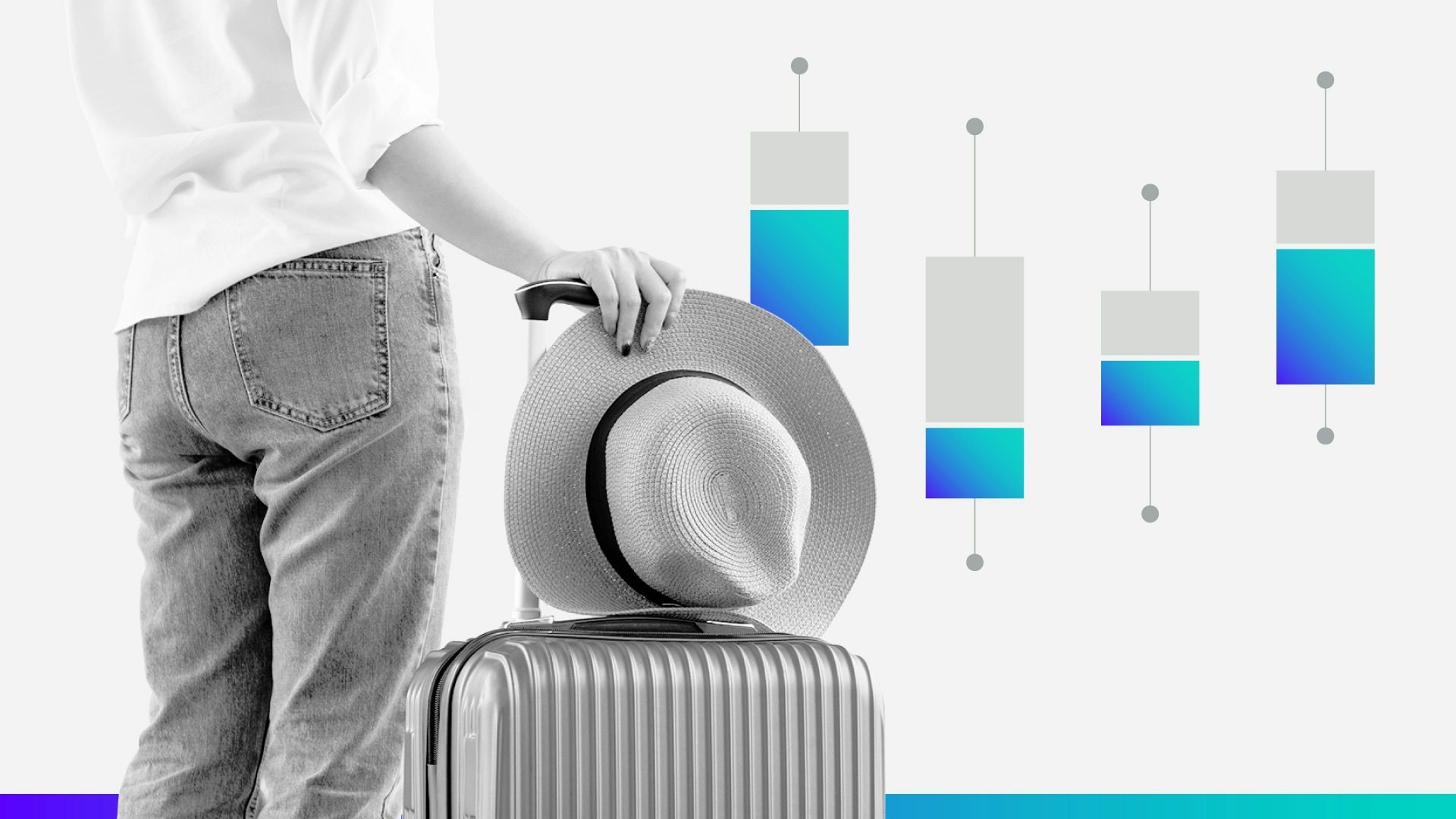First and Business Class Fliers are Increasingly High Earners

Key Takeaways
While business and first class fliers were previously more evenly spread among income groups, they’re now increasingly likely to be high earners, as premium economy fares attract middle- and lower-income travelers.
Airline favorability is improving amongst top-tier ticket purchasers, with at least 7 in 10 saying they have a favorable opinion of three major carriers.
Consumers who travel in first and business class are more likely to be driven by technology, image and sustainability.
Sign up to get the latest global brand, media and marketing news and analysis delivered to your inbox every morning.
Every so often, an image makes the rounds on the internet, featuring elegantly-dressed people enjoying a fine meal and a cocktail in the spacious cabin of an airplane in the 1960s. It’s typically accompanied by commentary about how air travel used to be fabulous, glamorous and luxurious, and that nowadays the experience is seen as hectic, cramped, frustrating and even demeaning. Never mind that safety in air travel was a much bigger gamble during the so-called golden years, it was also far more expensive — a transatlantic “bargain fare” would run a traveler the equivalent of over $3,000.
In modern times, air travel is more accessible and far more affordable. But while that means many of the bells and whistles of standard fares in the golden age are relics of the past, some consumers are still trading up for a more premium experience. A deep dive into Morning Consult Audience data reveals key characteristics of travelers who purchase business or first class airfare.
Premium airfare is becoming more exclusive
Unsurprisingly, premium airfare has always been more popular amongst higher earners than those on a tighter budget. However, as recently as two or three years ago, the share of consumers purchasing business or first class tickets was relatively evenly distributed across income groups. Now, that group skews much more heavily high-income — 42% of those who have purchased a business or first class ticket on an airline in the past year earn $100,000 or more annually, up 12 points from pre-pandemic years.
One of the drivers of this demographic change is a shift in airline strategy towards a relatively new fare class: premium economy. These tickets offer a happy medium between basic economy fare and business or first class, including perks like extra legroom, higher-end food and drinks, booking flexibility and the like (actual benefits vary widely between carriers). As a result, premium economy fares are attracting middle and lower-income consumers, who want more than the unbundled economy experience, but also don’t want to shell out big bucks for a first class ticket.
Business and first class fliers are increasingly high-income

The timing of the shift in income distribution among business and first class passengers mirrors the rise in popularity of premium economy — given comparatively favorable margins and rising consumer demand, many airlines have been expanding their products in this space in the past two years. And given the midpoint fare option now available, some airlines are further differentiating first and business class by making the high-end products even more premium, with lie-flat seats, private cabins, and chef-created meals on offer. Further divergence in fare classes will likely result in an increased shift toward high-income consumers in this space.
Major U.S. carriers are gaining favorability among premium consumers
For airlines looking to attract high-spending travelers, there’s good news: favorability has been trending up over time. Among the three major U.S. carriers that offer first and/or business class cabins (note, Southwest Airlines offers a business class fare with benefits, but not a separate cabin), favorability has climbed between 5 and 9 percentage points since the beginning of 2019.
While it’s also true that consumer favorability towards these airlines among the general public has been trending slightly up, the growth among premium passengers outpaces that of U.S. adults in general, suggesting that what they’re doing to attract first and business class passengers is working.
First and business class passengers have increasingly favorable impressions of major carriers

At the same time, post-pandemic favorability for these brands has been much more variable than it was in the year before and immediate aftermath of the COVID-19 outbreak. Favorability for each of the three carriers was trending up slightly before dropping in the first quarter of 2020 due to the near-complete shutdown of the industry. It then moved largely in sync for the brands through the summer of 2021, when travel returned in earnest and opinions began to diverge.
Some of these varying shifts in perception may be related to loyalty program changes — all three carriers have made at least some adjustments to their membership programs, which have been received with varying degrees of frustration by travelers. As premium passengers are also more likely to be loyalty members, airlines must tread carefully with any changes to avoid backlash and drops in favorability.
Airlines can continue to draw high spenders by tapping into their unique motivators
The growing income disparity among first and business class fliers gives airlines license to continue differentiating their high-end products for a more exclusive audience. In order to reach these travelers, airlines can utilize three key psychographic themes which differentiate from the general public.
The first is cutting-edge products and services. Business and first class customers are far more likely than the general public to say they are early adopters of technology, and that they are always looking for the latest trends. As a result, they will be enticed by carriers who integrate the latest technologies into the customer experience, offer a seamless mobile experience, and stay ahead of the curve in tapping into trends.
Premium airfare customers are driven by tech, image and sustainability

The second area of difference is the importance of image — business and first class passengers are more likely than others to say they want to achieve a high social status and live a life that impresses others. Airlines should take into account the social caché of high end travel and give travelers in this category opportunities to share their brag worthy experience with others, both on and offline.
Finally, this group is more likely to say they’ll pay more for products that are sustainable and good for the environment, meaning they’ll cast a critical eye on elements of service that are contributing to climate change. That could mean everything from major efforts like utilizing sustainable aviation fuel to smaller (yet still significant) changes like switching to reusable or compostable packaging for food and beverage service products, toiletries and the like, will likely be recognized and command increased spend from this group.
Lindsey Roeschke is an analyst whose work focuses on behavior and expectations of consumers in the travel & hospitality and food & beverage categories, particularly through a generational and cultural lens. Prior to joining Morning Consult, she served as a director of consumer and culture analysis at Gartner. In addition to her research and advisory background, Lindsey has more than a decade of experience in the advertising world. She has lived and worked in seven cities across four continents.


